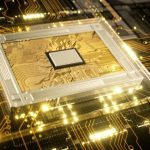A new chapter unfolds in the competition for advanced processor technology as Intel introduces the Intel Core Ultra Series 3, also known as Panther Lake. This processor arrives at a critical time when demand for AI and robotics-specific computing power continues to surge worldwide. With production situated at Fab 52 in Chandler, Arizona, Intel underscores its commitment to expanding U.S.-based manufacturing. The company’s efforts also reflect broader industry aspirations to bring AI closer to the edge and improve hardware for robotics innovation. Panther Lake sets the stage for Intel’s forward-looking strategies, impacting both commercial developers and end-users seeking higher performance and efficiency.
Intel’s past processor launches, like Meteor Lake and Arrow Lake, concentrated largely on consumer PC markets and incremental architectural enhancements. While those platforms improved efficiency and graphics gradually, they seldom targeted edge AI or robotics directly. Recent trends show chipmakers racing to integrate AI-focused hardware and software for industrial and edge use cases. The Panther Lake launch signals a noticeable pivot; Intel is not only pushing performance gains but is also investing in dedicated software and reference platforms to quicken robotics adoption. By producing more advanced chips domestically and introducing 18A process technology, Intel widens its manufacturing leadership at home compared to earlier strategies relying more on overseas fabrication.
How Does Panther Lake Aim to Meet Edge Robotics Needs?
Intel designed Panther Lake to address the growing demands of edge robotics and AI. With the introduction of the Intel Robotics AI software suite and reference board, customers can more easily deploy high-powered robots using the Core Ultra Series 3. Panther Lake integrates controls, perception, and artificial intelligence functionalities into a unified solution. Shipments of the first SKU are expected later this year, with broader availability in January 2026. Intel emphasizes the accelerated development cycle these tools can provide.
“Our next-gen compute platforms, combined with our leading-edge process technology, manufacturing, and advanced packaging capabilities, are catalysts for innovation across our business as we build a new Intel,”
stated Intel CEO Lip-Bu Tan.
What Sets the 18A Node and Panther Lake Features Apart?
As Intel’s first processor utilizing the 18A fabrication node, Panther Lake distinguishes itself with a 2-nanometer-class process developed and produced entirely in the United States. Innovations such as RibbonFET transistor architecture and the PowerVia backside power delivery system contribute to improved performance and efficiency. The processor achieves up to a 50% increase in CPU and graphics performance over prior generations. In addition, its new Arc GPU with up to 12 Xe cores and up to 180 Platform TOPS for AI workloads enable substantial improvements targeting machine learning and robotics applications. The application of advanced packaging techniques, including Foveros 3D chip stacking, further boosts system-level flexibility and scalability.
How Will Intel’s Clearwater Forest Influence Server and Data Center Markets?
The company has also previewed its Xeon 6+ Clearwater Forest processor, the first server chip based on the 18A architecture. Scheduled to launch in the first half of 2026, Clearwater Forest will offer up to 288 efficient cores and deliver a 17% instructions-per-cycle uplift versus previous generations. These advances are expected to increase server density, workloads scalability, and power efficiency for hyperscale data centers and cloud providers. In Intel’s view, this meets industry demand for more capable hardware to address rising data and energy needs.
Is Intel’s Investment in U.S. Manufacturing Sufficient to Meet Domestic Demand?
Intel’s investment in expanding U.S. manufacturing remains central to its competitive strategy. With Fab 52 being the fifth high-volume fabrication facility at Arizona’s Ocotillo campus, the brand aims to claim a leadership role in domestic advanced logic production. Intel is channeling a reported $100 billion into increasing capacity, and alongside manufacturing in Oregon and packaging in New Mexico, the company supports national priorities for semiconductor independence.
“The United States has always been home to Intel’s most advanced R&D, product design, and manufacturing — and we are proud to build on this legacy as we expand our domestic operations and bring new innovations to the market,”
Lip-Bu Tan remarked.
Intel’s recent pivot toward large-scale U.S. production and targeted edge AI solutions is notable compared to earlier years when chip supply chain disruptions highlighted vulnerabilities for the sector. Panther Lake’s architectural innovations may help Intel compete with rivals emphasizing similar technologies. For AI developers and robotics engineers, expanded software suites and reference platforms can reduce time to deployment. For industrial clients, Panther Lake’s scalability and AI acceleration may support smarter factories and more autonomous machines. Readers exploring robotics or edge computing solutions may benefit from monitoring how 18A and Core Ultra Series 3 adoption impacts real-world performance and availability, especially as Intel ramps up U.S. manufacturing capacity.
- Intel launches Panther Lake Core Ultra Series 3 for edge robotics.
- Panther Lake is Intel’s first processor using the 18A fabrication node.
- U.S.-based production aims to meet rising AI and robotics demand.










